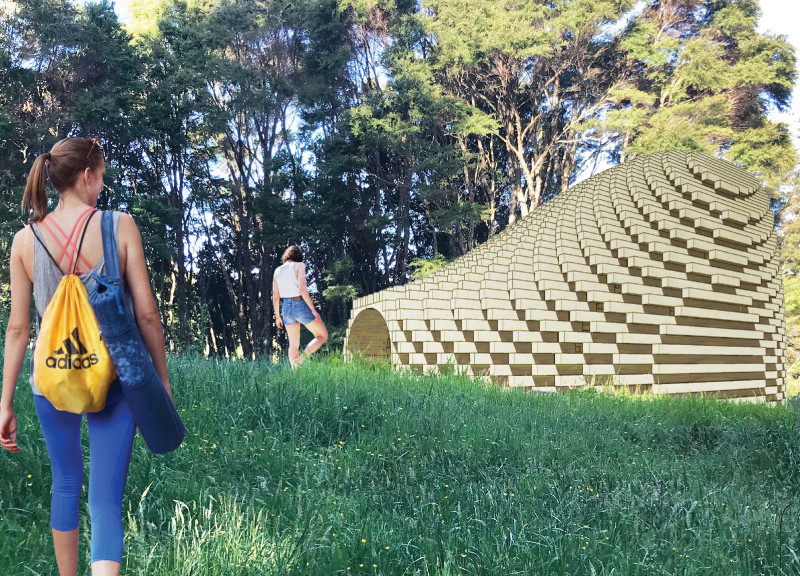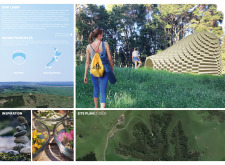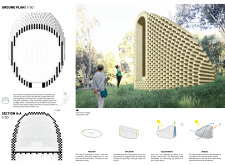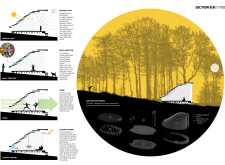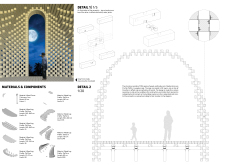5 key facts about this project
The Kiwi cabin is set in a natural landscape that emphasizes harmony with its surroundings. The design aims to create a space for meditation and self-reflection, drawing inspiration from the gentle shape of the kiwi bird. With its soft, rounded profile, the cabin offers a place for people to connect with nature while enjoying a tranquil retreat.
Form and Spatial Organization
The structure comprises two parallel spaces divided by a perforated skin. This design creates a cocoon-like interior that encourages calmness and openness. The north-south axis is intentionally left open to welcome sunlight and breezes, while the east-west axis is closed to provide protection from harsh winds and direct sunlight. This specific orientation highlights the cabin’s responsiveness to the climate, ensuring comfort for its occupants.
Materiality and Construction
Local timber logs are fundamental to the cabin's construction. They have a profile of 15 x 15 cm and a length of 180 cm, complemented by a wood frame with a thickness of 5 cm and a depth of 60 cm. The logs are arranged in an offset manner, creating a lightweight structure that allows light and air to flow freely. This arrangement not only enhances the spatial quality but also simplifies the assembly process, making it easy to organize and construct on-site.
Natural Light and Ventilation
Natural light plays an important role in the cabin's design. Openings in the structure allow soft, filtered sunlight to illuminate the interior throughout the day. This helps to create a warm atmosphere while blocking harsh sunlight. The larger apertures facilitate passive ventilation, allowing warm air to escape and maintaining a comfortable climate without mechanical systems.
Connection to the Surroundings
The cabin’s form allows for varied views, providing both close glimpses of the surrounding greenery and broader perspectives of the valley. This design integrates direct frames that highlight the landscape, reinforcing the relationship between the interior space and the natural environment. Attention to these details encourages occupants to appreciate the beauty of nature from within, creating a fulfilling experience during their time in the cabin.


